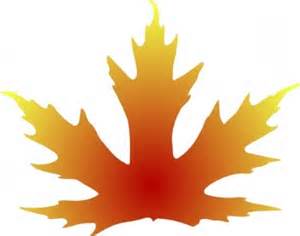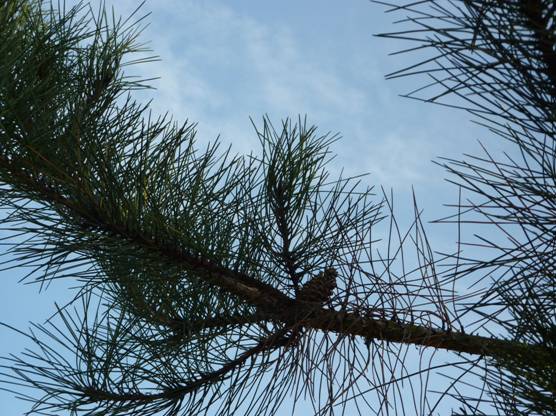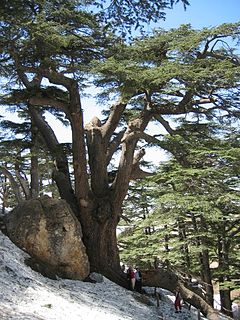
Salty Sam’s Fun Blog for Children
Post Number 65
Trees
Hello Everyone

When my first book Salty Sam and the Windy Day was published, the lnternational Tree Foundation very kindly agreed to plant some trees to help celebrate its publication.
The trees are now growing all over the place; some of them in school-grounds, some of them in gardens.
Trees are the biggest plants on the planet.
A giant redwood tree can grow more than 100 metres or 300 feet high and some trees are nearly 5,000 years old!
You can tell how old a tree is by measuring its girth (around its trunk) or counting the rings inside. Each ring represents one year. The narrower rings were formed in the winter and the wider ones in the summer when there was higher rainfall to make the trees grow more.
Trees in the far north make tougher wood because where the weather is colder the rings are smaller and tighter together – this makes the timber denser and, therefore, better quality.
lf trees drop their leaves in winter to conserve (not lose) water, they are called deciduous. ln spring these broadleaf trees have flowers. They are usually quite small and green and come out with the sprouting leaves so you have to look carefully to spot them. These flowers eventually turn into seeds which fall in the autumn or the following year.
Conifers such as pines and firs are evergreen. They have thin leaves called needles which have a thick skin on them called a cuticle. This cuticle helps to prevent water loss and gives protection in cold weather.
The conifers produce their seeds inside cones. Only the larch, which is a conifer, drops its needles in autumn, the others are evergreen. That means they are green all winter.
Trees in the tropical rainforests don’t all lose their leaves at one time. There is a dense green canopy all year round.
These places support an abundance (lots of) of life and a huge variety of species.
Many of the plants from the rainforests are being used to create medicines to cure serious illnesses. They are very important.
Some types of trees give us food like fruit trees and nut trees.
You might have some growing in your garden.
Auntie Alice has planted a few trees in her garden and Bill, Bob, Captain Jack and l have helped her to do it.
Bye bye everyone – don’t forget to subscribe to my blog!
Love and kisses
Salty Sam

www.christina-sinclair.com

Bill and Bob’s Joke of the Week![]()
![]()
Bill: What is the difference between an oak tree and a tight shoe?
Bob: l don’t know. What is the difference between an oak tree and a tight shoe?
Bill: One makes acorns and the other makes corns ache!

Salty Sam © Christina Sinclair 2015
Unauthorized use and/or duplication of material from this blog without express and written permission from this blog’s author and owner is strictly prohibited.
Links may be used to www.christina-sinclair.com

Picture Gallery

A Lebanon cedar tree has a distinctive shape with horizontal branches
It is featured on the flag of Lebanon

May blossom smells very sweet

The branch of a larch
The larch is the only needle tree to lose its needles in winter

Yew berries are very poisonous to people and animals

A maple leaf has a very distinctive shape

Beech trees grow to an enormous size
Three times the height of a house and more

The blossom of the horse chestnut tree turns to conkers in the autumn

Conkers are the seeds of the horse chestnut

Deciduous trees lose their leaves in the autumn

Some plants lose their leaves in autumn like this Acer tree and some are evergreen like the ivy plant that is growing up it

This narrow-leaved ash has just a few more leaves to drop as November approaches

A lot of trees are easy to identify in the winter because of the shape of their branches –
this larch has lost its needles but you can still see its cones

Larch loses its needles in autumn

Larch cones

The larch needles drop off in the autumn and grow back in the spring

Some conifers have extremely long needles

Laurel bushes also have tough evergreen leaves
They are green all winter

Frozen water cannot be sucked up by the roots of trees like liquid water can be

Even through the winter snows the buds of spring are developing

This bud is sprouting at the end of a branch in April

Two days later the flowers are visible and the leaves are following them out

Four days after that the flower stalks are even longer

There are flowers all along the branches

Four days after that the flowers are nearly all out and the leaves are growing bigger

The spring sunshine encourages growth

Two weeks later the flowers have been pollinated and are turning into seeds
and the leaves are full-sized

In November everything has flown away in the autumn winds but the buds are set for the following spring already

The ice and snow of winter comes to complete the circle

In the spring the seed cases have rotted away and the seeds are sprouting

If they can find a place where there is some earth and they won’t be disturbed, they grow into another tree

In the spring the buds start to swell

The buds will burst and reveal more flowers and then leaves like the year before

And then in a few days the leaves are out

 THE SALTY SAM NEWS DESK
THE SALTY SAM NEWS DESK

Last weekend Bill and Bob went on a long car journey, and to keep them amused their mum gave them some puzzles to do.
They had to unjumble these letters to find types of trees and then they had to look out of the car windows and see if they could find them in the landscape.

See if you can un-jumble these words too…
- ewy
- kao
- rhcal
- lamp
- ceehb
- nipe
- dacre
- lampe
- orhesenutthc
- wanrothh
(The answers are in the word search puzzle)

Bill and Bob in the woods behind Auntie Alice’s cottage

If you would like to see lots of interesting pictures of trees from around the world, then check out my trees Pinterest board at:
https://www.pinterest.com/TheSaltySamBlog/trees/

*********************
TO ADVERTISE ON THIS BLOG
PLEASE CONTACT:
christina.sinclair.ads@aol.co.uk
*********************


Recipe Spot
This is a really easy recipe to make a quick, hot dessert called almond roll – if you have the oven on for your main meal you can put it in with that (this saves money on electricity).
You must ask permission to use the oven. Your mum or dad might prefer to put your almond roll in the oven themselves when they are cooking the dinner.
This recipe serves 4-6 people.

Mix together in a bowl
20g / 3/4 ounce butter
1/4 – 1/3 cup sugar
2 teaspoons vanilla essence
2 teaspoons almond essence
1 cup/150g almond flakes
(You could add fruit jam instead of the sugar, if you wanted to)
- Spread the mixture across a sheet of ready made puff pastry but not quite up to the edge
- Roll the pastry up widthways
- Place on a greased baking sheet
- Bake at 200°c for 30 minutes
- Eat hot or cold with or without cream or custard
- lf there is any left over, you can take a slice to school in your packed lunch box
BLOW MY FOGHORN!!!

PLUS
Salty Sam fans can join in with their comments and share them with children all over the world. You will need permission if you are not an adult.
Enter your e-mail address to subscribe to my blog and receive new Salty Sam Blog Posts for free by e-mail every week. Your address will be kept private and will not be shared with any third party.
Sign me up at the side bar



lt’s the Weekend!

TREES WORDSEARCH
|
D |
P |
I |
J |
U |
Y |
H |
G |
T |
F |
R |
E |
D |
F |
C |
X |
Z |
S |
A |
|
W |
Q |
W |
E |
D |
R |
F |
T |
G |
Y |
H |
P |
P |
O |
L |
K |
J |
U |
H |
|
Y |
G |
T |
H |
O |
R |
S |
E |
C |
H |
E |
S |
T |
N |
U |
T |
Q |
A |
Z |
|
X |
C |
F |
T |
F |
D |
R |
P |
L |
A |
R |
C |
H |
L |
K |
I |
J |
U |
O |
|
L |
P |
L |
O |
K |
I |
J |
Y |
E |
W |
J |
M |
L |
P |
S |
E |
D |
T |
H |
|
Y |
U |
J |
I |
O |
P |
P |
L |
I |
T |
J |
M |
N |
J |
I |
K |
O |
K |
O |
|
L |
L |
P |
L |
N |
N |
I |
I |
J |
H |
H |
G |
T |
R |
F |
D |
R |
T |
F |
|
U |
H |
J |
O |
I |
K |
N |
J |
H |
O |
A |
K |
J |
N |
H |
G |
V |
B |
N |
|
M |
K |
O |
P |
L |
C |
E |
D |
A |
R |
X |
Z |
P |
A |
L |
M |
C |
F |
R |
|
P |
O |
I |
U |
J |
Y |
G |
T |
R |
N |
P |
L |
I |
J |
H |
A |
H |
T |
F |
|
R |
D |
E |
R |
F |
G |
V |
X |
Z |
S |
D |
C |
Y |
H |
G |
P |
I |
J |
H |
|
Y |
T |
F |
G |
R |
D |
F |
G |
T |
G |
H |
Y |
P |
L |
L |
L |
O |
K |
N |
|
J |
G |
F |
R |
T |
D |
S |
X |
Z |
Q |
V |
B |
G |
T |
B |
E |
E |
C |
H |
|
L |
L |
U |
G |
H |
B |
F |
C |
D |
X |
V |
G |
F |
R |
T |
Y |
H |
G |
F |
|
E |
W |
Q |
A |
S |
C |
P |
L |
K |
I |
U |
H |
G |
T |
Y |
B |
V |
G |
F |
|
R |
T |
D |
F |
C |
V |
G |
H |
B |
N |
L |
H |
E |
D |
V |
G |
C |
S |
X |
|
D |
E |
R |
F |
D |
S |
W |
Q |
A |
S |
Z |
X |
S |
D |
C |
F |
S |
R |
D |
|
F |
D |
C |
V |
B |
H |
G |
T |
Y |
U |
J |
I |
K |
O |
P |
L |
K |
L |
P |
|
O |
I |
J |
M |
N |
H |
T |
E |
W |
Q |
A |
S |
Z |
X |
C |
D |
E |
R |
F |
YEW LARCH BEECH CEDAR HORSECHESTNUT
OAK PALM PINE MAPLE HAWTHORN
Answers next week…
Please note that the material on this blog is for personal use and for use in classrooms only.
It is a copyright infringement and, therefore, illegal under international law to sell items made with these patterns.
Use of the toys and projects is at your own risk.
©Christina Sinclair Designs 2015

Lebanon cedar


